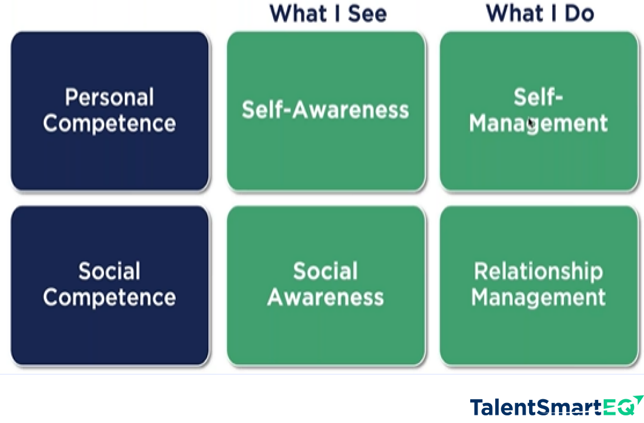Training & Development Materials
Links to non SuccessFactors based training, new process resources, frequently accessed training resource’s or professional development materials can be found on this page.
BLCA Pre-Auditor Presentation & Resources
These materials were previously housed on Finance Training site.
The grants management session introduced the budget upload template for new awards, automated grant status change notifications and reviewed the cost sharing tab, cost share reconciliations and budget tool impact and revenue allocation.
| Pre-Auditor Training Resources | Sub-Contractor Payment Approvals |
| BLCA 290 – JV Better Examples | Approve a Sub-Contractor Payment Request |
| BLCA 290 – JV Poor Examples | Setting Substitute Approvers |
| BLCA 290 – Revised PAR Better Examples | |
| BLCA 290 – Revised PAR Poor Examples |
Emotional Intelligence
As one of the Finance teams FY23 Finance performance goals, the entire team, participated in an Emotional Intelligence professional development exercise. The objectives of the initiative included:
- Objective 1: Develop a basic understanding of Emotional Intelligence concepts and the impact of an individual’s emotional intelligence in the workplace.
- Objective 2: Take part in an Emotional Intelligence assessment exercise and obtain the results.
- Objective 3: Collaborate with their direct supervisor to develop a personal development goal based on the results of the assessment.
- Objective 4: Report on their progress towards the personal development goal in their FY23 performance assessment.
- Objective 5: Have an opportunity to participate in at least one follow on Emotional Intelligence activity.
What is Emotional Intelligence or EQ and why is this a performance goal? While definitions may vary across this well researched topic area, we are utilizing materials from the TalentSmart organization in our efforts. They provide the following definitions and illustration.
Emotions are present in everything you think, do, and say each day on the job, in your career, and throughout your life. Emotional intelligence (EQ) is how you handle yourself and others. Your EQ taps into a fundamental element of human behavior that is distinct from your intellect and personality. It affects how you manage your behavior, navigate social complexities, and make personal decisions that achieve positive results.
People who develop their emotional intelligence communicate more effectively, handle stress and conflict productively, are better team players, are able to navigate change, and also perform at a higher level.
Specifically: Emotional Intelligence (or EQ) is the ability to understand and manage your own emotions, and those of the people around you. The graphic shown here highlights the four most common Emotional Intelligence skills.

Resources Available to All:
Emotional Intelligence Introduction by Travis Bradberry
- Coauthor of Emotional Intelligence 2.0
- Cofounder of TalentSmart EQ
- https://www.youtube.com/watch?v=auXNnTmhHsk&t=7s
Purdue Resources
- Self-Study guides have been developed for each of the four dimensions. Through additional readings, videos and self-reflection questions users can dig deeper into the specific dimension. Users are challenged to develop their own action plans around each dimension.
- PowerPoints – “Grab and Go” PowerPoint presentations have been developed for each of the four dimensions. These presentations can be used to lead group discussions within an individual’s team or more broadly as desired.
- Both of these resources can be obtained from Rita Jackson.
TalentSmart
- Webinars (https://www.talentsmarteq.com/webinars/) – Register as an individual for scheduled or recorded webinars
- Reading Materials under Resources – Articles & Latest Research, Blog Posts – https://www.talentsmarteq.com/articles/
- Talent Smart Videos –
- Learning Section– search on Emotional Intelligence for a variety of EQ resources
Additional Resources:
- Why Emotional Intelligence is Vital for Remote Workers (Forbes.com)
- Watch for additional announcements from the Culture and Communication Team.
- Have an idea for an activity in your unit? Talk with your director!
Faculty Enhanced Research Appointment Program (pilot)
The Office of Research maintains resource materials associated with the pilot Faculty Enhanced Research Appointment Program. Additional questions can be directed to the faculty members Business Manager, Research Specialist, Sponsored Program Services or department leadership.
Grants Management Resources
SuccessFactors: Finding the Treasurer’s Matrix & Other Resources
Most of the Finance team training resources are maintained in the SuccessFactors Learning Management System (LMS) and accessed through the Learning module. Users should begin their search for a course by logging into SuccessFactors and navigating to the Learning page.
If you are looking for a specific course and have the name or LMS course number, you can click the word “search” found at the end of the sentence under the “My Learning @ Purdue” header to gain access to a search box. Enter the course name or LMS number in the box to find the course.
If you do not have a specific name or number or want to see all the courses that are contained in the Treasurer’s Matrix, scroll down the Learning page to the “Direct Links to specific topics” section. Some of the topical groups found here are of interest to the Finance Team such as Finance / Comptroller and Funds Management. The Training Matrix is also found here. Depending on your browser, you may need to click the small arrow in the middle of the screen to expand the screen and see the Treasurer’s Matrix link. Clicking the matrix link will return a list of all the matrix courses. You can search within this list of courses or scroll through the pages to find the course you are looking for.
Another helpful feature on the Learning home page is the “History” report. Located near the top of the Learning home page, clicking this box, and selecting “view all” will bring up a list of the LMS courses you have taken in the past. This is an effective way to review past work, find and access reference materials contained in a training module or to retake a course.
Voluntary Support – New process resources are now located in the Governance Manual under “Finance Topics.”